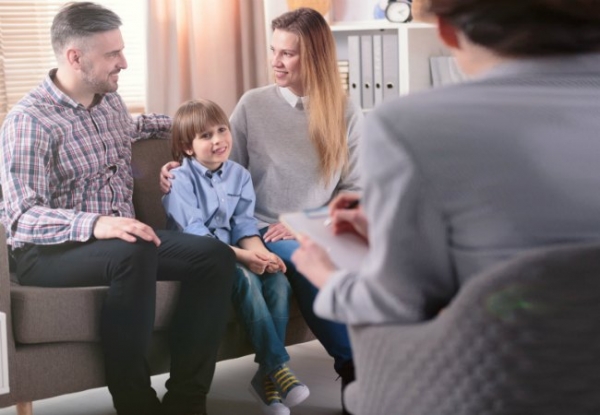Teaching Children to Resolve Conflicts
In a perfect world, our children would all get along with one another. There’d be no sibling squabbles and no fighting amongst friends. Of course, we don’t live in a perfect world, and so peaceful conflict resolution is an important skill for children to learn. When left to work it out for themselves, few children actually do. In fact, without proper teaching, children are likely to fall into patterns of bully and victim and never learn how to work through the dispute constructively.
Emotional intelligence is a key part of conflict resolution because for a resolution to take place, children must be able to understand their own emotions and the emotions of others and to verbally express those feelings in an appropriate way. This doesn’t happen overnight. Although it takes time to develop these skills, each time we talk about feelings with our kids, we are helping the process along. Describe to your children how sadness, anger, happiness, and other emotions feel in the body. Talk about ways to move through the sadness, frustration, etc. so that your child will learn the lifelong benefit of emotions regulation.
A second key to successful conflict resolution is learning how to communicate effectively. You can coach children through this process by playing the role of interpreter. The goal is to help children voice their feelings and needs and to help each child understand what the other person’s feelings and needs are as well. In her book, Peaceful Parent, Happy Siblings, Dr. Laura Markham says, “Successful interpretation requires us to use our empathy to understand the perspective of both children. It also requires us to stay calm, so we can resist leaping to judgment, even while we set limits to keep everyone safe.” If children cannot express what he wants with words, they will use actions such as hitting, pushing, biting, etc. That’s why emotional intelligence is so important. Once kids learn to identify and express their emotions, the need to act out diminishes and communication greatly improves. As Dr. Markham lays out, three things are happening while you are playing interpreter.
1. You’re describing what’s happening.
2. You’re empathizing with each child.
3. You’re coaching them to put their feelings into words without attacking the other person.
Here’s how that might look:
Six-year-old Jack is playing with his dinosaurs when his four-year-old brother, Sam, comes over and grabs the T-Rex from his hands.
Jack: Hey! Give it back Sam! I’m playing with that!
Sam: No! I want to play!
You: Hey, what’s the shouting about?
Jack: Sam took my T-Rex that I was playing with!!
You: So Jack was having a turn with the T-Rex and you wanted a turn? Can you tell him what you want?
Sam: I want a turn with the T-Rex!
Jack: It’s my turn!
You: I hear you. You both want a turn. What solution can we come up with?
Jack: I can give the Sam the T-Rex when my turn is over.
Sam: But I want it now!
You: Sam, I hear that you want the T-Rex now, but how would you feel if Jack grabbed it out of your hands before your turn was up?
Sam: Bad I guess. Fine, but I want a turn soon.
Jack: I’ll play with it until lunch, and then you can play with it.
Sam: Ok.
You: That sounds like a great solution! Well done!
Of course, these situations don’t always go so smoothly, but we do the best we can at helping them come to a peaceful resolution. After a few practices, they’ll begin to do this on their own. I still remember the day I started to step in during a sibling dispute and my older son, “That’s okay, Mom. We can handle it.”
Magical.
Problem-solving is another important aspect of conflict resolution. When children are presented with problems like wanting the same object, they need to learn how to compromise. Rather than jump in and give them a solution, ask them to come up with the solutions. This builds their problem-solving muscles! You may need to nudge them along by asking questions like “what caused you to do that” or “how do you think that made her feel” or “what was the outcome of your decision?” Tell them to look for win/win solutions or a compromise that everyone is happy with. Then, go through the solutions with them and ask if they all agree. Once an agreement is made, watch to make sure the kids follow through with their agreement.
Finally, children should be taught how to do repair work after conflict. Rather than forcing children to apologize, focus on coaching them through relationship repair. Ask “how can you make this better” or “what do you think your friend needs right now?” If your child is ready to give a heartfelt apology, that’s great. Other suggestions might be to help repair or rebuild something that was destroyed, draw a card, help the sibling with a chore, etc. When children are given the responsibility and the opportunity to repair the relationship, they learn that they can make things better and that they’re capable of fixing mistakes. If the child doesn’t want to do any repair work, they’re probably still harboring hurt feelings that need to be worked through. You might just say, “It sounds like you need a little more time. I know that you’ll do the right thing when you’re ready to make this better.”
Summary for Teaching Peaceful Conflict Resolution
1. Teach your child about emotions. Emotional intelligence is key not only to conflict resolution but to success throughout life. Empathize with your child’s emotions. Talk about feelings often. Discuss how others might be feeling. Play games that teach children about emotions and role-play scenarios to really help the lessons stick.
2. Teach positive, effective communication skills. One way to do this is through your role as interpreter. Walk the children through verbalizing their feelings and needs as well as listening to the feelings and needs of the other child.
3. Help the children be problem solvers by asking questions that help them come up with win/win solutions. Monitor to make sure they honor their agreement.
4. Coach the children to make things better through repairing the relationship. Empowering them to make things better helps them feel better, too.
source: creativechild


